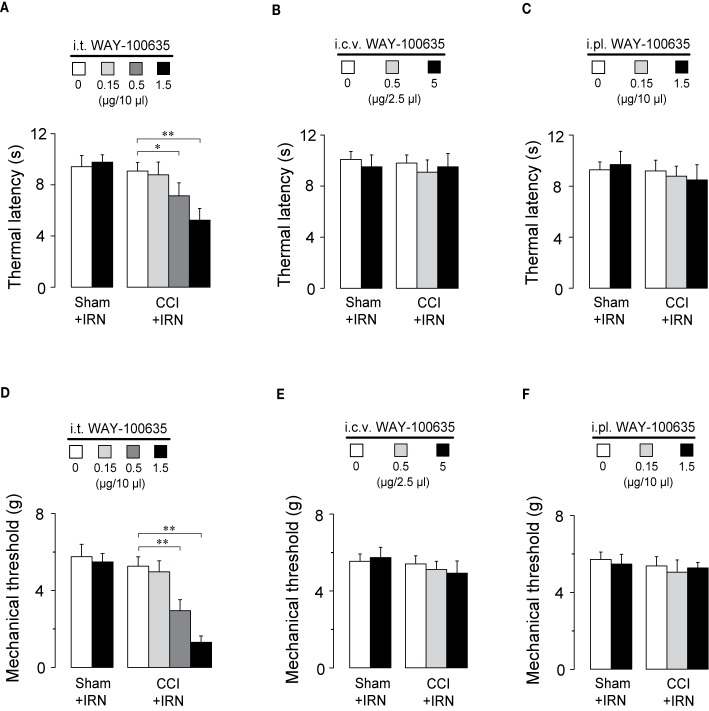Figure 7.
The spinal 5-HT1 receptors are responsible for the antinociceptive effects of isorhynchophylline (IRN) on behavioral hyperalgesia and allodynia. (A) I.t. injection of WAY-100635 counteracted the antihyperalgesic effect of isorhynchophylline to thermal (heat) stimuli in a dose-dependent manner (0.15, 0.5 and 1.5 μg). (B) Effect of intracerebroventricular (i.c.v., 0.5 and 5 μg) injection of WAY-100635 on the thermal latency in sham-operated and neuropathic mice. (C) Effect of intraplantar (i.pl., 0.15 and 1.5 μg) injection of WAY-100635 on the thermal latency in sham-operated and neuropathic mice. (D) I.t. injection of WAY-100635 counteracted the antiallodynic effect of isorhynchophylline to tactile stimuli in a dose-dependent manner (0.15, 0.5, and 1.5 μg). (E) Effect of intracerebroventricular (i.c.v., 0.5 and 5 μg) injection of WAY-100635 on the tactile threshold in sham-operated and neuropathic mice. (F) Effect of intraplantar (i.pl., 0.15 and 1.5 μg) injection of WAY-100635 on the tactile threshold in sham-operated and neuropathic mice. Data are expressed as mean ± SEM (n = 8–10 per group), assessed by two-way ANOVA followed by Duncan test. *p < 0.05 and **p < 0.01, significantly different from the vehicle group.

